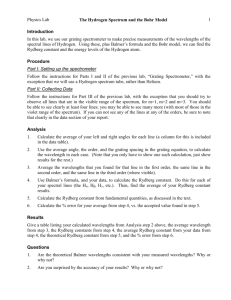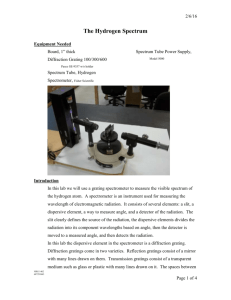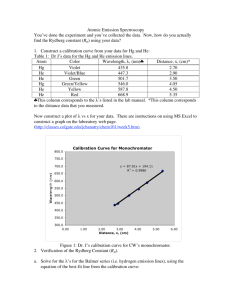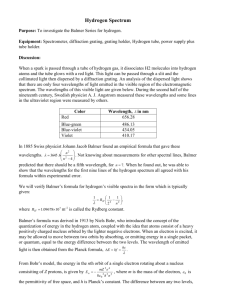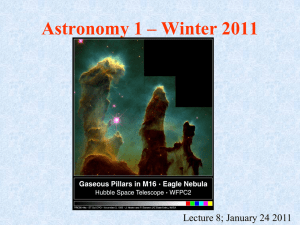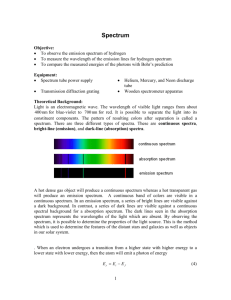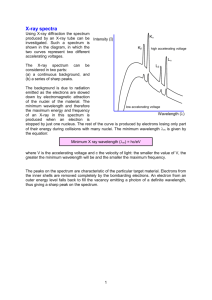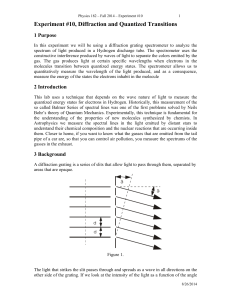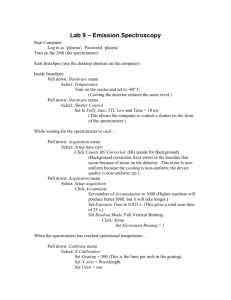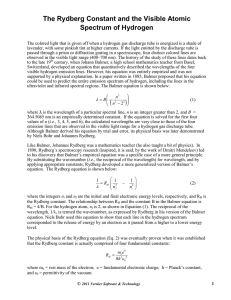The Hydrogen Spectrum
advertisement
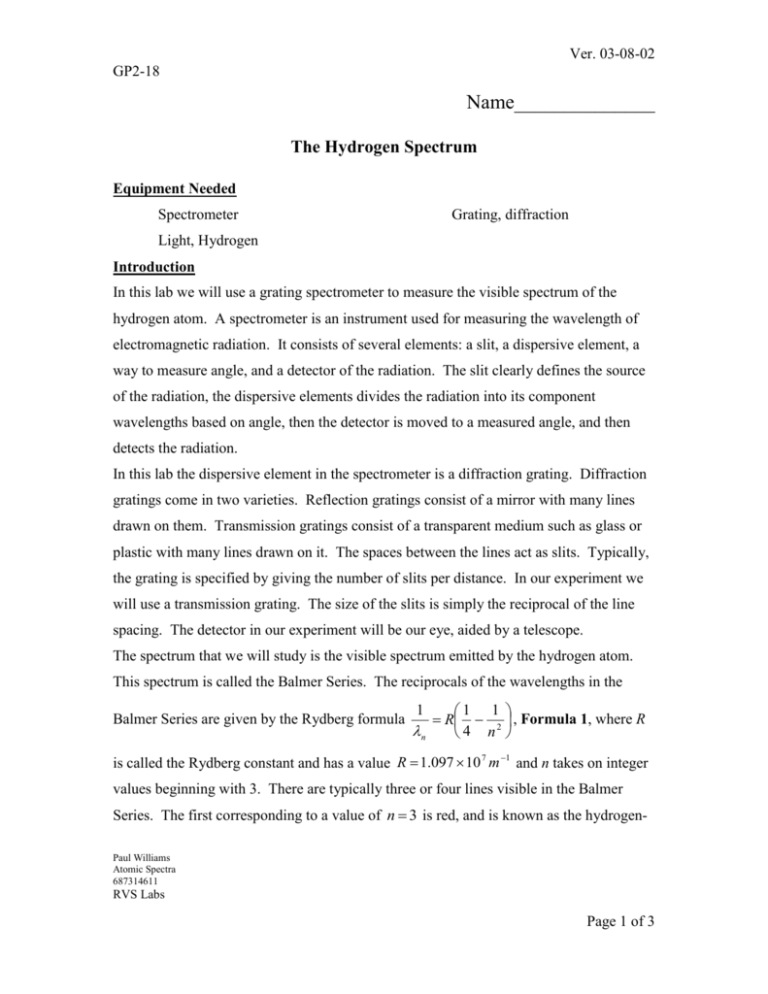
Ver. 03-08-02 GP2-18 Name______________ The Hydrogen Spectrum Equipment Needed Spectrometer Grating, diffraction Light, Hydrogen Introduction In this lab we will use a grating spectrometer to measure the visible spectrum of the hydrogen atom. A spectrometer is an instrument used for measuring the wavelength of electromagnetic radiation. It consists of several elements: a slit, a dispersive element, a way to measure angle, and a detector of the radiation. The slit clearly defines the source of the radiation, the dispersive elements divides the radiation into its component wavelengths based on angle, then the detector is moved to a measured angle, and then detects the radiation. In this lab the dispersive element in the spectrometer is a diffraction grating. Diffraction gratings come in two varieties. Reflection gratings consist of a mirror with many lines drawn on them. Transmission gratings consist of a transparent medium such as glass or plastic with many lines drawn on it. The spaces between the lines act as slits. Typically, the grating is specified by giving the number of slits per distance. In our experiment we will use a transmission grating. The size of the slits is simply the reciprocal of the line spacing. The detector in our experiment will be our eye, aided by a telescope. The spectrum that we will study is the visible spectrum emitted by the hydrogen atom. This spectrum is called the Balmer Series. The reciprocals of the wavelengths in the Balmer Series are given by the Rydberg formula 1 1 R 2 , Formula 1, where R n 4 n 1 is called the Rydberg constant and has a value R 1.097 10 7 m 1 and n takes on integer values beginning with 3. There are typically three or four lines visible in the Balmer Series. The first corresponding to a value of n 3 is red, and is known as the hydrogenPaul Williams Atomic Spectra 687314611 RVS Labs Page 1 of 3 Ver. 03-08-02 GP2-18 alpha line. This line is used extensively in solar studies. The line corresponding to n 4 is green and the last two lines visible, corresponding to n 5 and n 6 respectively are violet. Lines for values of n beyond 6 are in the ultraviolet and are not visible. In this lab we will use a spectrometer to measure the Balmer spectrum and then compare our measured values to those computed from the Rydberg formula. Procedure 1. The setup will consist of a hydrogen spectrum tube placed into the socket of a special power supply. The power supply has 5000 volts at the socket terminals inside the plastic. Do not touch the tube when it is on as the high voltage terminals may still be exposed. 2. Through the eyepiece set up for you, move your eyes towards the left or right. You should see some colored lines. You will also notice that the apparatus has a scale so that you can record the wavelength of light corresponding to each line. Record the color of the line and corresponding wavelength in the table below. 3. Determine the wavelength of the first four lines in the Balmer Series using the Rydberg formula, equation 1. Show all calculations on a separate sheet of paper. 4. Calculate the percent difference between each of your measurements and the value calculated from the Rydberg formula. Color n Red 3 Green 4 Violet 1 5 Violet 2 6 Wavelength (nm) Wavelength (nm) Measured From Formula 1 % Difference Paul Williams Atomic Spectra 687314611 RVS Labs Page 2 of 3 Ver. 03-08-02 GP2-18 Paul Williams Atomic Spectra 687314611 RVS Labs Page 3 of 3
